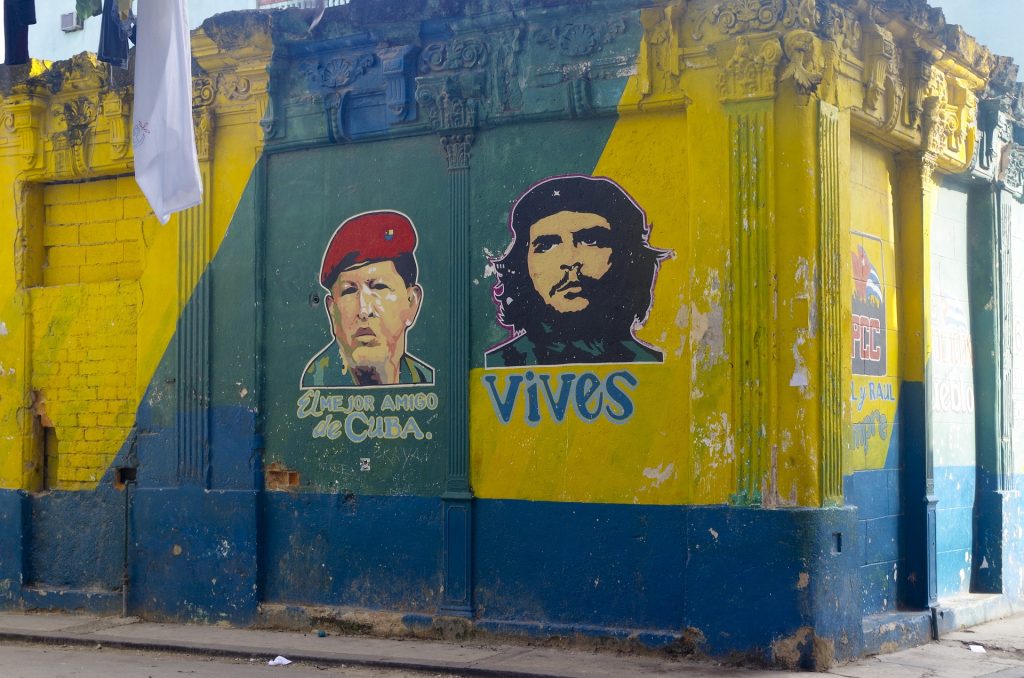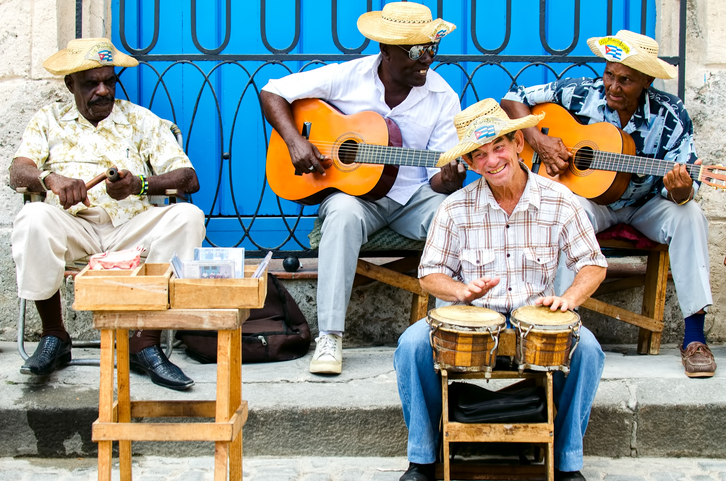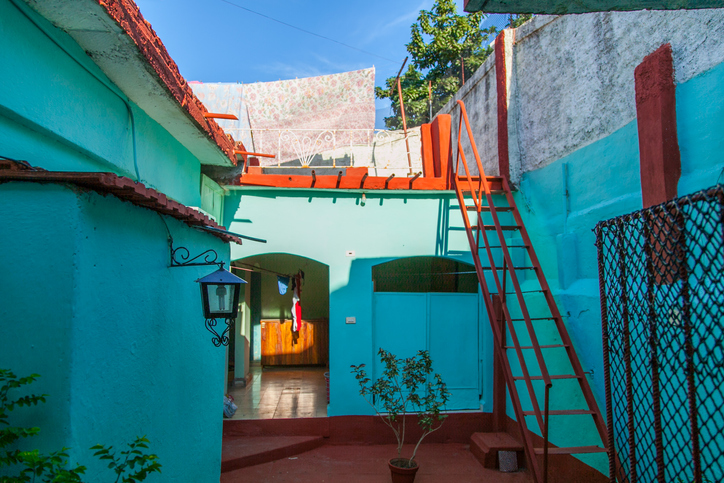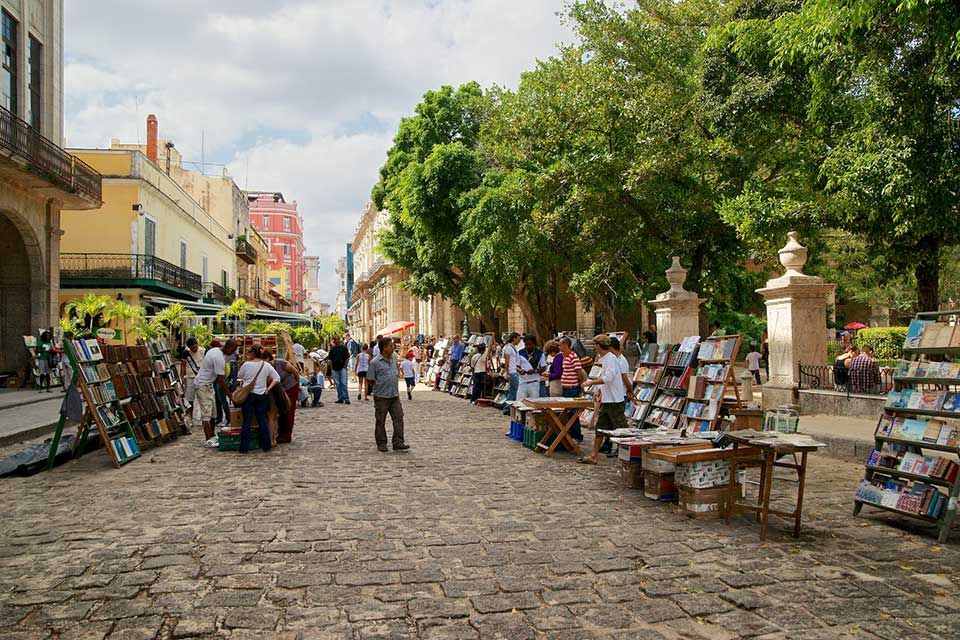There is the Caribbean and then there is Cuba. The island is very much part of the region and yet it is so much different from any other of its neighbors. For once, its rich history led it to evolve unlike any other place not just in the region, but in the whole world. Secondly, as the biggest island in the Caribbean, Cuba is like a small contingent where a visitor can spend months and not be able to see and experience even a small percentage of the island’s attractions and natural beauty. And yet, and thirdly, Cuba is still a mostly undeveloped and unknown as a tourist destination, which makes it truly unique and a perfect gateway for those who prefer idyllic settings and don’t mind modest or lacking amenities.
| KEY FACTS | Cuba |
|---|---|
| Size | 42,426 square miles (109,884 square kilometers) |
| Population | 11,221,060 (64.1% white, 26.6% mixed, 9.3% black) |
| Status | Independent country, socialist republic |
| Official language(s) | Spanish |
| GDP per capita (2017) | $8,433 |
| Currency | Cuban Peso, Cuban Convertible Peso |
| Electricity | US standard two-and three prong |
| Driving | on the right |
Cuba’s modern history starts with Spanish colonization in the early 16th century. The first towns of Baracoa and Havana were founded by Diego Velázquez de Cuéllar between 1511 and 1515. The Spanish spread their rule quickly and soon controlled the whole island forcing the local, predominantly Taino population into hard labour/slavery. The Spanish would continue to rule Cuba with an iron hand for the next 350 years. In that time, the colonizers brought to the island thousands of slaves from Africa, built tens of impressive military forts throughout its territory and turned its ports into important stopping points for the Spanish fleet. However, by the mid nineteenth century, the locals grew weary of Spanish rule and eventually revolved in 1868. The war for independence did not result in it and instead, caused Cuba to suffer a huge population loss and economic damage. The United States decided to step in into the conflict in 1898 with its own military when its battleship Maine burned in the harbour of Havana. In 1902, the exhausted country got a break when it finally gained independence though the Americans gained many rights to indirectly control the island.
Cuba didn’t have it easy in the 20th century either. Fulgencio Batista became the president in the 1940s, but when he was to loose an election in the 1952, he staged a coup and took power by force. This triggered a revolutionary movement led by Fidel Castro, which led to several years of conflict. In 1959 Fidel finally took power and allied Cuba with the Soviet Union causing a stir with the US and decades of sanctions. These did not end even in the early 1990s when the Soviet Union fell. Defiant Castro decided that Cuba will remain communist even when all other communist states abandoned the failed policies of the Soviet system. Throughout the 90s and 2000s Cuba remained virtually closed out to the world and Americans were banned from visiting the island. Only since 2008 Cuba has started to open up as Raul Castro took power over from his ailing brother. However, the most significant changes occurred only in the last 5 years as the Obama administration removed many sanctions against Cuba and allowed Americans to travel to the island once again.
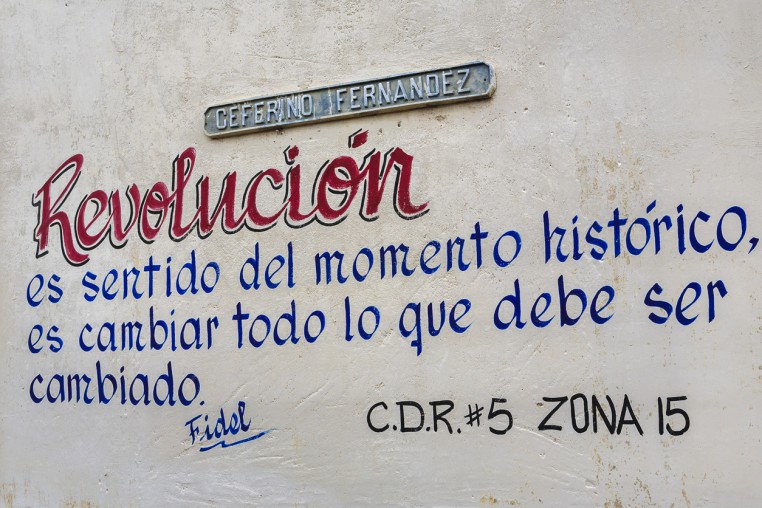
Today, anyone can visit the island and travel freely around it (though there are some minor restrictions still). And, doing so is a fantastically rewarding experience! The rich history we just described is visible everywhere. The island’s natural beauty is breath-taking and most of it remains unspoilt by modern civilization. The people, although majority still struggling with poverty and government’s restrictions, are incredibly friendly and happy. Indeed, despite Cuba being an economically deprived country, it is one of the safest islands in the Caribbean to visit. Crime against tourists is rare and the locals are more than happy to help out when in need. To be honest, Cuba completely defines what it should be based on its modern history. It’s a place of happiness and beauty that is hard to find in even the richest countries in the world. Hence, no matter where you are from, expect Cuba to take your breath away as soon as you arrive and continue to do so throughout your stay!
Getting there
From the beginning of 1960s all the way to 2016, it was technically illegal for Americans to travel to Cuba. US economic sanctions against the communist regime included tourism and, so, for many decades there were no commercial flights available to Cuba from the continental US. Fortunately, this did change in 2016 when the Obama administration loosened up sanctions against the island and allowed as many as six airlines to operate flights to several Cuba cities. However, under US travel policies (and updated in 2018 by the Trump administration, which banned travel under People to People visits), each traveller to Cuba has to specify a reason for travel that fits into one of 12 categories and none of them specifically state a tourist visit. The most popular options for tourists are categories:
- support the Cuban people
- public performances, shows, athletic events
- religious activity
- educational activity
Whether you come to Cuba or from anywhere else in the world, you will need to have a 30-day visa to enter the country. These cost anywhere from $20-$110 (depending on how you get them and from what travel company) and can be purchased online or at a gate before your flight. And speaking of flights, the airlines that fly direct to Cuba include JetBlue, Delta, Southwest, United and American Airlines and there are as many 10 American cities from which you can fly to one of six Cuban cities: Havana, Varadero, Santa Clara, Santiago de Cuba, Holguin and Camaguey. New York, Miami, Houston and Fort Lauderdale have the most non-stop options with the last one of these mentioned operating flights to four of the six cities we mentioned.
Although there are is now a decent number of flights to Cuba from the US, the island is actually very well connected with the rest of the world. In fact, more European cities have direct flights to Cuba than to anywhere else In the Caribbean. You can get to Havana on a non-stop flight from London Paris, Madrid or Moscow among many others. There are also plenty of direct flights available from Mexico City, Toronto, Montreal as well as quite a few of the other Caribbean islands.
Getting around
Since it’s a big island, you are very likely to need some kind of transportation to get around. For several reasons, we advise against that to be a rental car. These are not only very expensive here, but they are also pretty hard to get. In fact, a popular business venture among the locals in Cuba is to rent a car and use it as a taxi to transport tourists. Therefore, rental car companies tend to sell out well in advance and tend to charge more than anywhere else in the region. Insurance is especially expensive and an additional cash deposit is also required and can be anywhere from $200 to $500.
A much better option to get around Cuba than a rental is a public bus. The Cuban bus system is called Viazul and it connects all of the major cities with comfortable, mostly modern and airconditioned buses. Although you can buy some tickets online in advance, it is actually easier to buy them at an office at a bus station right before your journey. Although some routes are much busier than others, if you come to a ticket office at least 30 minutes before departure, you should not have any problems getting a seat. If buses really don’t appeal to you, you can also consider taking internal Cuba flights that connect at least 10 of the island’s airports. However, keep in mind that the quality and count or planes available on these journeys isn’t great. Indeed, at least 10% of the flights experience significant delays or are cancelled and travellers are transported to their destination via buses instead.
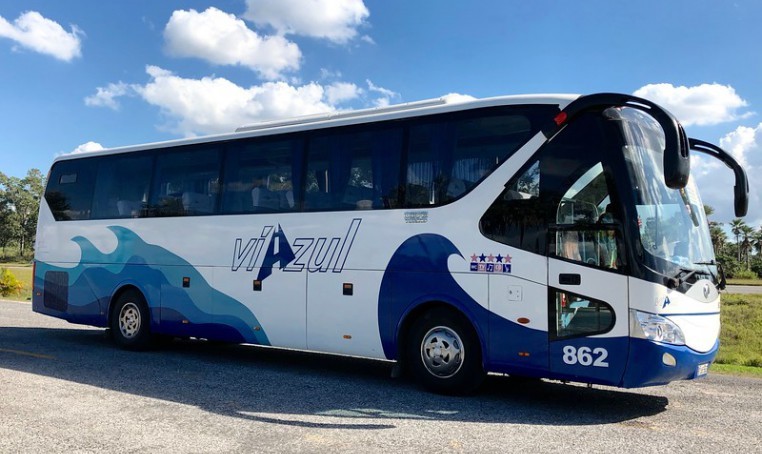
When it comes to getting around Cuban cities, local buses are your cheapest and most adventures option though if your don’t speak Spanish, it is easy to get lost. Taxis are another way to get around, but they are expensive. On the plus side, you can try one of the famous Cuban vintage taxis. These colourful cars date back to 1950s and have been carefully maintained for many decades as under the communist policies Cubans did not have access to buy new foreign cars. Today, there are still hundreds of these cars cruising the streets of Havana and several bigger cities and you get one to get to a specific destination or just take a short cruise around to take pictures and chat with the driver. Expect to pay a minimum of $50 for a ride in a vintage taxi.
Things to explore
There is so much to see and do in Cuba that it is impossible for us to describe even a small percentage of the island’s offering all on this page. Therefore, we will focus only on the most important attractions here, while cover many others overtime within our blog posts. It will also be best for us to split this section by Cuban provinces so that we can emphasize the most important things to explore in each region. The following provinces are listed according to geography starting from the one located most west all the way to the one located most to the east:
- Pinar del Río – home to two stunning national parks, Pinar del Rio is a heaven for nature lovers and those who prefer beautiful and tranquil sights to busy streets. The first of the national parks, Vinales, covers an area close to 60 square miles and is a well organized hiking destination with many local guides offering inexpensive tours. The park is famed for an extensive rock formations called mogotes that are popular among climbers. The park also contains the largest cave complex in the Caribbean called Gran Caverna de Santo Thomas that costs 10 CUC to enter and takes about 90 minutes to explore. The other national park (Parque Nacional Peninsula de Guanahacabibes) is where you will find some of the wildest and beautiful Cuban beaches as well as encounter lots of unique fauna and flora (think turtles, parrots and lizards)
- Artemisa – if you want to go where there are very few tourists, then you will definitely enjoy Artemisa.This, mostly agricultural province, is locate only 20 miles west of Havana. Besides being a great destination for beach loves who can enjoy gems such as Playa Baracoa and Playa Salado located it on its northern coast, Artemia is also an awesome place to hike. The area of Soroa is a designated park with miles of superb trails that can be explored on foot as well as on a bike. Not far away from Soroa you will find Las Terrazas, one of the most well known ecovillages in all of the Caribbean
- Havana – the capital city needs its own dedicated page to describe the hundreds of amazing sights and places it contains! Importantly, parts of the city that include Habana Vieja (Old Havana), Malecon and Vedado contain some of the impressive and historically significant architecture, musuems and landmarks in all of the Americas. These include the stunning 18th century Cathedral de la Habana, imposing 16th century fort of Castillo de la Real Fuerza as well as two other forts nearby called Castilo de los Tres Santos Reyes Magnos del Morro and Fortaleza de San Carlos de la Cabana. They also include the city’s museum, which is itself an 18th century palace, museum of the arts (Museuo Nacional de Bellas Artes), Plaza Vieja where some of the most important historical events in the Cuban history occurred over the last 400 years as well as the city’s oldest cementary of Necropolis Cristobal Colon, which contains impressive graves of some of the most famous Cubans. More than awash with amazing places, Havana breathes music, entertainment and fun. Come to Callejon de Hamel every Sunday for rumba, Basilica Menor de San Franciso on most days for choir concerts and well as Jazz Club la Zorra y El Cuervo on pretty much every day. Also make sure to visit one of a couple of the famous Havana’s theatres like Teatro Nacional, Gran Teatro de la Habana or Cabaret Parisien for some spectacular music shows playing all year round
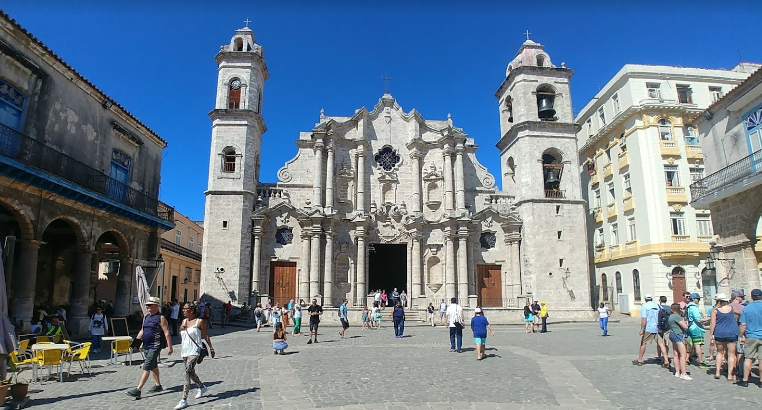
- Mayabeque – the province that hugs Havana, Mayabeque is easily accessible from the capital city yet rarely visited by foreign visitors. And yet, this province boasts some amazing beaches like Playa Jibacoa where you can go diving straight from the shore! It is also home to Parque Escaleras de Jaruco that you can hike to get a view of Havana in the distance and you can also check out Jardines de Hershey, expansively gardens used to be owned by the famous chocolatier. Finally, if you come to the town Bejucal on the day before Christmas, you will get to experience an impressive parade and festival called Las Charangas that is one of the most elaborate of those organized in Cuba.
- Matanzas – this province is the go to place for tourists looking for a fun and relaxing beach holiday and for a good reason. The area of Varadero is the “Punta Cana of Cuba”. There are many large international resorts here with beachfront accommodations, spas, variety of entertainment and all-inclusive packages.The city of Matzanas also has plenty to offer and many argue it is culturally as rich as Havana itself. On the other side of the province you will find Gran Parque Natural Montemar, a huge area of swamps and natural beauty that includes some truly spectacular and almost always empty beaches (check out the tranquil Playa Larga and the diving paradise of Playa Giron).
- Cienfuegos – there is lots to do and see here within a very small area. The town of Cienfuegos is an architectural marvel though it was only founded in 1819. Outside of town, there is lots of nature to check out like the botanical park of Jardin Botanico de Cienfuegos, protected park of Laguna Guanaroca and the hiking friendly mountains of Sierra del Escambral, which are home to several picturesque waterfalls like El Nicho located just a couple miles away a tiny mountain village of Las Vegas where you won’t find any casinos, but a couple of very friendly farmers instead
- Villa Clara – this is the revolutionary province with Santa Clara being the city in the heart of Cuban revolutionary movements. You will find Che Guevara’s museum as well as tens of his statues here as well as many significant locations that played a critical role in Cuban history. Outside of Santa Clara you will not want to miss the carnival in Remedios (Parrandas) that occurs every Christmas or a visit to Cayo Santa Maria for a relaxing swim. Also, much of the mountain range of Sierra del Escambray is located in Villa Clara and you may want to consider hiking here. There aren’t many tourists around and you end up finding a beautiful waterfall to enjoy just for yourself
- Sancti Spíritus – the smallest province of Cuba encompasses the town of Sancti Spiritus and its neighbourhoods. Dating back to 1514, this is one of the seven oldest towns in Cuba. Its architecture is stunning and attractions are many, and yet you won’t find many foreign tourists here. One of the best landmarks of the town is the Puente Yayabo bridge built in the beginning of the 19th as well as Casa de la Guayabera that serves as a museum dedicated to Cuban leaders
- Ciego de Ávila – cutting Cuba into two equal parts, Ciego de Avila’s biggest attractions is its coast and tens of beautiful islands. This includes Cayo Coco and Cayo Guillermo that host many and some of the best resorts in Cuba. Arguably, these islands also have the very best beaches in Cuba that have silky smooth sands, shallow waters and stretch for miles on end. If you are very adventures you can also visit one of the uninhabited islands of Golfo de Ana Maria where you will truly feel like Robinson Crusoe
- Camagüey – this is the largest province of Cuba though its cities and towns don’t feel very big at all. Camaguey itself is a city of beautiful plazas and many well preserved buildings dating back to the beginning of 16th century when the city was founded. In fact, the city’s old town is a Unesco Heritage Site and walking along many of its streets you will definitely feel like you have either moved in time or play in a movie about 16th century colonial Spain. If you are a history buff, you will also want to stop by the town of Guaimaro, which witnessed much of Cuban history including the signing of its first constitution. The province is also a an equally fun destination for hikers and beach bums. Sierra del Chorrillo has tens of miles of serene trails whereas the archipelagos of de Sabana-Camaguey and de Los Jardines de la Reina are perfect for a sandy gateway away from the crowds and prying eyes
- Las Tunas – the province of music festivals, Las Tunas hosts many artists and performers throughout the year. Some of the best events include a country music festival held every June in Jornada Cucalambeana, as well as a cowboy rodeo held twice a year and a festival of magic held every November in the city of Las Tunas. Keep in mind the province is also home to many lovely beaches that, for the most part, remain undeveloped. Consider stopping by Playa la Herradura, Playa la Llanita and Playa las Bocas
- Granma – remote, underdeveloped and still set firmly in the 20th, if not the 19th century, Granma is even more so, a fascinating place to visit. The Gran Parque Nacional Sierra Maestra is a huge forest area with untouched by humans patches of land that can be hiked, climbed, cycled or explored on a horseback. This is where Fidel Castro and his band of revolutionaries hid from Batista regime for years and this is also where you can find some of the highest mountain peaks of Cuba. Granma province has actually two national parks and the second one of Desembarco del Granma is no less impressive than the first one. Besides the nature, the main cities of Bayamo and Manzanillo have plenty to offer as well. In fact, Bayamo is considered the birthplace of independent Cuba as it is here that on Plaza de la Revolucion where this independence was first proclaimed in 1868
- Holguín – a popular tourist destination, its resort towns of Guardalavaca and Playa Pesquero are home to many hotels and amenities for beach hungry visitors. However, besides these two destinations, there are hundreds of other, amazing beaches and tens of picturesque towns lining up Holguin’s coast. The provinvial capital isn’t that popular with tourists, but it is still worth a visit. There are many museums and churches here that showcase Cuban past and just the two we will mention here that are most popular are Museo de Historia Provincial and Cathedral de San Isidorio. Also, its worth to note that Holguin’s town of Biran is where the Castro family was based and where you can find a museum dedicated to them. Also nearby is Salto del Guayabo, one of the most impressive waterfalls in all of Cuba
- Santiago de Cuba – this province is mostly known for its capital city, which in many ways rivals Havana and, in fact, used to be the capital of the island back until the early 17th century. The city of Santiago de Cuba boasts the oldest house in Cuba from 1522 that used to serve as a residence of Diego Velazquez. It is also home to the oldest cathedral in Cuba called Cathedral de Nuestra Senora de la Asuncion and many, many other, important 16th century buildings and landmarks, many of which now serve as museums. The province of Santiago de Cuba is where you will find the tallest peak in Cuba (Pico Tuquino) as well as miles of relaxing hiking trails just 20 miles away from the provincial capital with Parque Baconao
- Guantánamo – most people associate this province with an American prison, yet this place is so much more! Its Parque Nacional Alejandro de Humboldt is a diamond of natural reserves with tens of species of fauna and flor that cannot be found anywhere else in the world. The beach town of Baracoa, on the other hand, is a lively tourist destination that is home to many superb restaurants and bars. Indeed, it is a similar story with the city of Guantamo as well where music and good food go hand in hand
- Isla de la Juventud – this special district is not on tourist radars yet, but it will likely get there in the next couple years. The shores of this island are superb for snorkeling and diving and there are lost of great, quiet beaches here as well. The main town of Nueva Gerona is where Fidel Castro was incarcerated and the prison now operates as a museum. Outside of town, you will not want to miss out on visiting ancient caves near Punta del Este as well as checking out the turtle breeding center in Cocodrilo
Accommodations
Different to any other place in the world, there are four (very different from each other) types of accommodations in Cuba:
- Casas particulares – by far the most popular type of accommodation, these are room rentals in privately owned Cuban houses. The rentals are managed directly by home owners who usually live in the property with their guests and aim to make an extra revenue by renting out a part of their property. Casas particulares, of which there are thousands across all Cuban cities and towns, are carefully controlled by the Cuban government. Therefore, there is a certain level of accommodation and service that is required from all Casa owners. At a minimum, your room should have 2 beds (unless you requested a single), a private bathroom with hot shower, air-conditioning and a fridge. Per night cost for a room at a casa particulare ranges from 15 CUC to 80 CUC making it a very affordable, but hence, also a very popular option with foreigners. Be sure to make a booking at a particular Casa Particular well in advance and the best way to do it is by calling the particular location. Most owners do speak English and although some of them do have websites, besides sending an email booking online is rarely an option.
- Campismos – this is the most popular holiday accommodation among Cubans themselves. A campismo is pretty much what it a translates to – a camp/camping ground with a set of cabins or huts. These are mostly pretty basic so don’t expect to find hotel type amenities here. In fact, you may even have to take a walk to another building every time you want to use a bathroom. On the plus side, costs of staying at a campismo are hard to beat. You can find one for as little as 10 CUC and the average cost is about 30 CUC. Keep in mind that each campismo is designated either as one only for Cubans (national) or for both Cubans and foreigners (international). Prices are higher while amenities are generally better at international campismos. To find one that may be best fit for you, check out the government run website that lists pretty much every one in the country.
- Resorts – on the opposite side of the scale to campismos, resorts are the large, high priced, three to five star hotels with modern rooms and an extensive list of amenities.There are no less than a 100 of them throughout the island and they include international brands such as Iberostar, Melia and Sheraton. Indeed, Cuba has as many, if not more high-class resorts than popular tourist destinations like the Dominican Republic or Mexico. Costs of staying at a resort also match those in other Caribbean destinations. When it comes to locations, most of these large hotels are located along the coasts with several areas especially packed with them. Tip of Varadero has as many as 10 resorts, the area of Bahia Naranjo has at least five and the islands of Cayo Santa Maria and Caya Coco have three each. Finally, just like you would anywhere else, you can book your stay at a Cuban resort on most booking sites or directly on a hotel website.
- Hotels – a category between casas particulares and resorts, Cuban hotels are numerous and greatly varied in offering and style. Counted in high hundreds, you can find them in the centers as well as in the suburbs of every city and town. Importantly, every hotel belongs to one of several government organizations (as every Cuban hotel is at least 51% owned by the government), which manages its license. The lower scale and least expensive hotels belong to Islazul whereas mid-range hotels are part of Cubanacan. The higher end hotels that usually only accept Cuban convertible pesos belong to either of two organizations, Gaviota or Grand Caribe. No matter what organization they belong to, you can book most of Cuban hotels online though some of the more popular sell way in advance. This is especially the case for Havana and its neighbourhoods. Make sure to do your research well in advance and book as soon as you know your dates of travel.
Food & restaurants
Eating in Cuba is like moving in time for at least a couple decades. One big reason for this is because of economic sanctions, which made it difficult for Cubans to acquire ingredients and produce from abroad. Hence, for a very long time local chefs had to make do with locally produced foods and they ended up turning them into the most creative and exquisite recipes. What the economic sanctions also meant is that you won’t find in Cuba many internationally recognized restaurant chains, especially American ones. Therefore, if you can’t live without McDonalds or Burger King, Cuba is probably not the best food destination for you.
What you will find in Cuba, however, are two very different types of restaurants that each have a very unique food experience to offer. On one hand, Cuba is full of government owned restaurants, which serve primarily Cuban cuisine (comida criolla). Majority of these establishments are visited primarily by Cubans and they are famed for limited menus, but also extremely affordable prices. Nonetheless, some of the government restaurants are truly first rate and you will find many of them located inside government owned hotels. On the other hand, privatisation reforms that occurred in the country in 2011, meant that Cubans could now open their own private restaurants and they have done so in the thousands since! Among them you will find establishments that serve Italian, Spanish and even Korean cuisine. However, Cuban dishes still dominate at most of the private restaurants and that means their menus are populated by fish and meat dishes, plenty of rice and beans and a large variety of ice creams for dessert. In fact, Cubans love their ice cream so if you do to, you are in luck. You can find a fridge full of ice cream in pretty much every food shop and restaurant in the country. If you are curious about some of the best restaurants on the island check out this list of the top 21 put out by Timeout in 2018.
Nightlife
Cuba loves music and music loves it back. Indeed, it is difficult to walk down a Cuban street and not hear a sound of a guitar and a lovely singing voice. Cuba is also a dancing capital of the Caribbean with hundreds of clubs, festivals and outdoor parties where dancing goes on from early evening to early morning most days of the week. When it comes to dancing styles, Cubans are versatile and highly skilled, but don’t feel embarrassed if your skills are not on par with theirs. There is no judging here and freestyling is more then welcomed. Nevertheless, it will help to know at least a little bit of Danzón (official Cuban music), salsa, mambo, cha-cha-cha or bolero, which dominate Cuban dance floors.
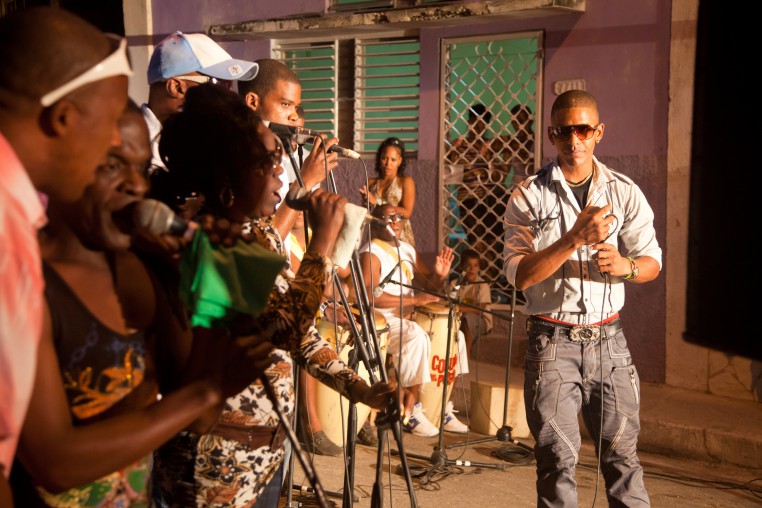
As far as best places to party, Havana definitely wears the crown for most variety of places to party. Our favourites here include Casa de la Música and Disco Turquino where you can expect live Cuban music play until late most nights. Both places are very popular though so its worth to come in early. If you are looking to learn salsa, check out Club Salseando Chevere, which doubles as a dance school and a dance club. Finally, if you are just looking for some tasty drinks and a cool vibe, there are tens of fantastic bars around Obispo, El Malecon and Vedado. For some amazing atmosphere check out Casa Miglis, Hotel Nacional, Cafe la Flauta Mágica or El Cocinero.
Outside of Havana, your options will also be plentiful. Santiago de Cuba, Camagüey, Holguin, Santa Clara as well as most other smaller towns will each have several great bars playing music and open to dancing on most nights of the week. Places we particuralry like include Club el Iris in Santiago de Cuba as well as Casa de la Trova in Camagüey. Finally, in addition to regular nights out, Havana as well as every other major city in Cuba hosts a huge number of music and dance festivals throughout the year. Havana alone hosts as many as 20 events each year that include things like International Cuban Dance Festival (April) and Havana Salsa Congress (May). Elsewhere, popular events include the Festival of the Caribe that happens in Santiago de Cuba every July as well as Trinidad Festival that occurs in June.
Sports & adventure
Although its infrastructure is still lagging behind other Caribbean destinations, Cuba is very much in competition to its neighbours when it comes to sports and adventures. Baseball, basketball and volleyball are the most popular team sports in the country and it shows. You will run into a field or a court for one of these sports (and people playing on the,) often and if you ask to join to play, you will be rarely rejected. Indeed, Cubans will always be happy to guide you or help on your journey whether you are driving, hiking, cycling or riding a horse. Actually, in Cuba you are likely do be doing much more of latter three activities that the first one. Hiking and cycling are especially popular and there are lots of places to do it here. There are as many as 10 national parks you can explore although for many you will need a guide and a governmental permission to go in.
Of course, Cuba is also a fantastic spot for snorkelling, diving and sailing. The island’s coastlines are so rich in underwater treasures that they can compete with all of the rest of the Caribbean! What’s more many sites have not yet been properly explored, which makes Cuba a very attractive destination for more advanced divers, sailors and fisherman who are looking for an adventure and want to be the first ones to discover Cuba’s hidden treasures. The island is also a great place for advanced and medium-skilled climbers. These types of adventure seekers will find much satisfaction in Vinales Valley National Park where there are as many as 300 climbing routes around Mogote del Valle, La Costanera and El Palenque.
[embedyt]https://www.youtube.com/watch?v=DTr56ih8VTY[/embedyt]Safety and security
Cuba is safe destination for tourists. Indeed, despite the relatively impoverished society, vast majority of locals will want to help you rather than steal from or hurt you. Nevertheless, although violent crime against visitors is unheard of, pickpocketing and petty theft do occur and its easiest to become a victim in busy areas of the bigger cities. What makes such a crime especially hard-hitting is the fact that Cuba is primarily a cash society and you are likely to be carrying significant amount on cash with you. Therefore, if this is the case, try to diminish your risks by concealing the money on you and splitting it between whoever else is in your group. Also, be sure not to have all your cash on you, but do leave some back at your accommodation in a safe or a concealed location.
The History of Cuba: Communism, Castro, and the Cuban Revolution
The Cuba we know today is a sun-soaked, Spanish-speaking, salsa-dancing independent Caribbean country with colourful…
Are these the Caribbean’s best hikes?
Stretch your legs and take a walk: the Caribbean’s magnificent scenery lends itself to exploring…
The huge impact of COVID-19 on the Caribbean way of life
People of the Caribbean are known for their resilience. After all, few other populations have…
The music of Santiago de Cuba
You won’t find it hard to hear live music anywhere in Cuba. Bands of roving…
Experience the real Cuba by staying at a Casa Particular
While planning a trip to Cuba, you will have four different options for accommodations. Firstly,…
Old Havana – A Walk Through Time
Although Cuba stands out as one of the most prominent islands in the Caribbean, it…

